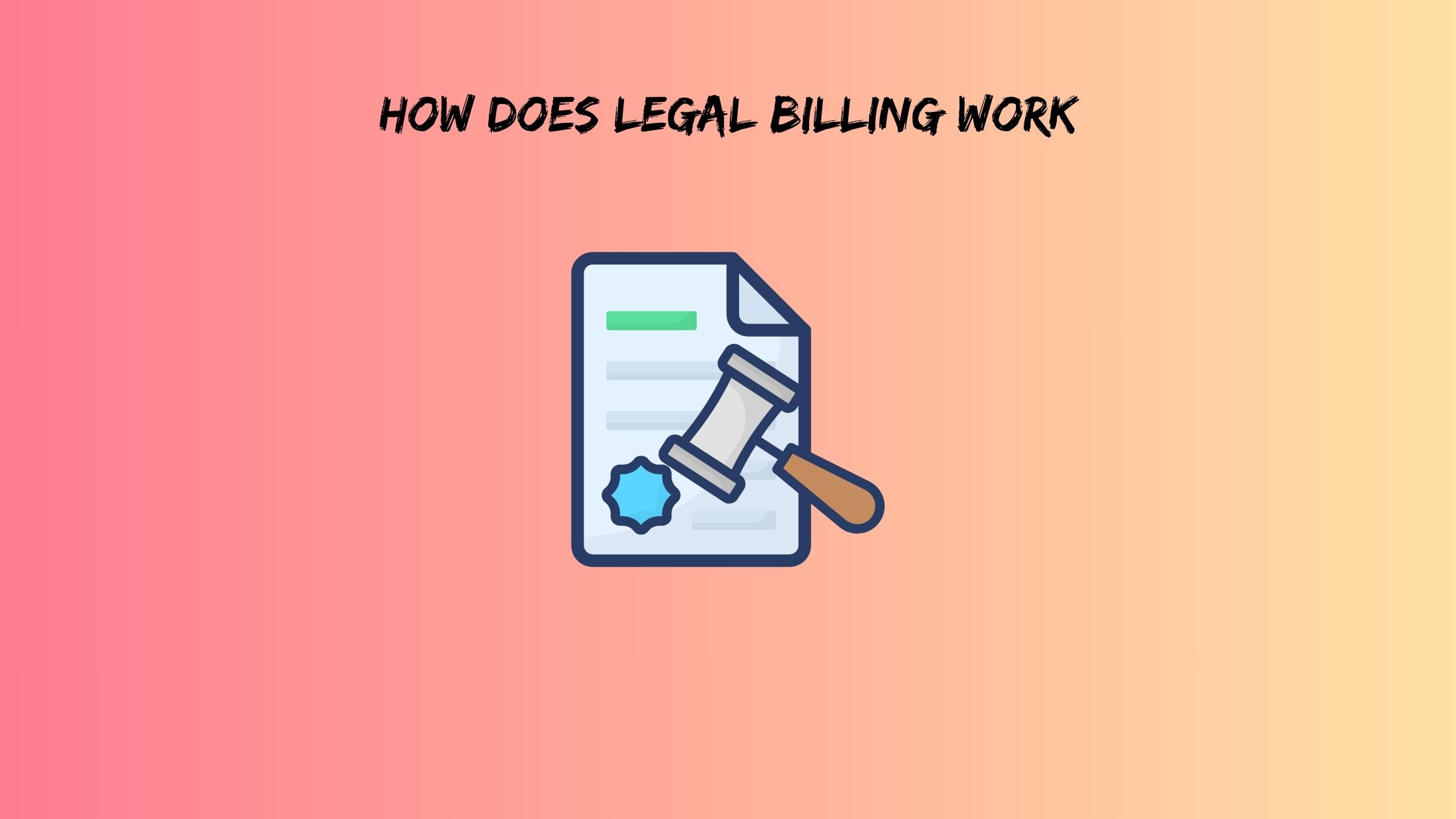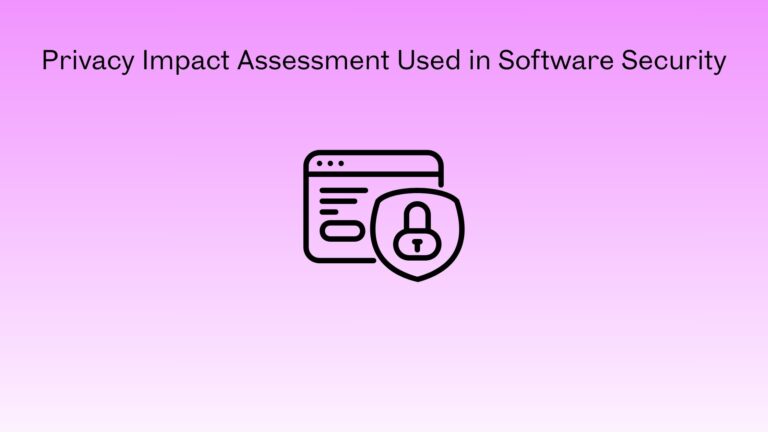How Does Legal Billing Work? A Complete Guide for Law Firms & Clients
Imagine this: you receive a legal bill for $47,832.50, with line items such as Research various matters – 3.7 hours and Telephone conference regarding strategy – 0.3 hours. Meanwhile, senior partners at top firms now charge nearly $3,000 per hour, yet a staggering 67% of clients admit they don’t understand how legal billing actually works.
This disconnect creates chaos. Clients delay payments because bills look like hieroglyphics. Law firms struggle with collections because invoices lack clarity. Attorney-client relationships suffer when billing becomes a source of confusion rather than transparency.
Understanding how does legal billing works benefits everyone involved. Lawyers get paid faster when clients understand the process. Clients make better decisions when they grasp fee structures and billing methods. This guide breaks down legal billing from both perspectives, offering practical insights that textbook explanations often overlook.
Legal Billing Fundamentals: More Than Just Time Tracking
Legal billing encompasses far more than lawyers writing down their hours on timesheets. Modern legal billing represents a complex system of capturing value, documenting work, and facilitating payment for professional expertise.
The core components work together like gears in a clock. Time capture records every billable activity, from client calls to document review. Expense tracking monitors costs that clients reimburse, including travel, research databases, and filing fees. The rate application multiplies hours by predetermined hourly rates. Invoice generation transforms raw data into professional bills. Payment processing handles collections and follow-up communications.
Key players include partners who set rates and approve bills, associates who perform most billable work, paralegals who handle routine tasks at lower rates, and billing staff who manage the administrative aspects. Clients also play crucial roles by providing information promptly and reviewing bills carefully.
The billing lifecycle typically spans 30 to 90 days from work completion to payment collection. Shorter cycles indicate efficient processes, while longer cycles suggest communication or collection issues that need attention.
Technology has revolutionized this process. Modern law firms use sophisticated software that captures time automatically, generates detailed invoices, and processes payments electronically. However, many firms still rely on outdated manual systems that create inefficiencies and billing disputes.
Also read: Best Access Governance Software
Primary Billing Methods: Understanding Fee Structures
Law firms structure fees using several distinct approaches, each serving different types of legal work and client relationships.
Hourly Billing: The Industry Standard
Hourly billing dominates legal services because it directly links payment to work performed. Partners typically charge $800 to $3,000 per hour, associates range from $300 to $800 per hour, and paralegals bill between $150 to $400 per hour. These rates vary dramatically by geographic location, firm size, and practice area specialization.
Most firms use 1/10th hour increments, meaning they bill in six-minute blocks. A three-minute phone call gets rounded up to 0.1 hours. This system ensures precise time tracking while simplifying billing calculations.
Billable activities include client communication, legal research, document drafting, court appearances, and case preparation. Non-billable activities like administrative tasks, business development, and internal meetings typically aren’t charged to clients. Understanding this distinction helps clients evaluate bill reasonableness.
Rate transparency has improved as clients demand clearer communication about pricing. Firms now provide detailed rate schedules and notify clients before implementing increases, though these conversations can still feel awkward for both parties.
Alternative Fee Arrangements: Beyond the Billable Hour
Alternative fee arrangements (AFAs) are gaining popularity as clients seek cost predictability and value-based pricing. Flat fee billing works well for routine services like contract reviews, divorce proceedings, or estate planning, where the scope is clearly defined.
Contingency fees align attorney and client interests by basing payment on case outcomes. Personal injury lawyers typically charge 25% to 40% of settlements or judgments, taking significant risk in exchange for potentially higher rewards. Clients pay nothing up front but surrender substantial portions of successful outcomes.
Retainer agreements require upfront payments that firms draw against as they perform work. True retainers remain the property of clients until earned through completed services. Many firms misuse this term to describe advance payments, creating confusion about fund ownership and availability.
Blended rate structures simplify billing by charging uniform rates regardless of which attorney performs specific tasks. Instead of tracking partner versus associate time separately, clients pay single rates for all work. This approach reduces billing complexity while potentially increasing overall costs.
Value-based billing represents the holy grail of legal pricing, though implementation remains challenging. Fees reflect results achieved rather than time invested. Success in major litigation might justify premium pricing, while routine matters receive standard treatment. However, measuring “value” objectively proves difficult in practice.
Hybrid Approaches: Combining Methods
Sophisticated clients often negotiate hybrid arrangements that blend different billing methods. Capped fee arrangements provide hourly billing protection through maximum limits. Clients get detailed time records while avoiding runaway costs on complex matters.
Success fee components add performance bonuses to base fees, rewarding exceptional results without full contingency arrangements. Phased billing applies different fee structures to distinct case stages, recognizing that discovery work differs significantly from trial preparation.
Also read: Best Document Signature Software
The Billing Process: From Time Entry to Payment
Understanding how does legal billing works requires following the complete process from initial time capture through final payment collection.
Time Tracking and Documentation
Accurate time tracking forms the foundation of defensible billing. Real-time tracking captures activities as they happen, reducing memory lapses and improving accuracy. However, many attorneys still use retrospective tracking, recording time at day’s end or week’s conclusion. This approach sacrifices precision for convenience.
Detailed activity descriptions separate good billing from great billing. Entries like “Research – 2.3 hours” invite client scrutiny and disputes. Better descriptions explain “Research trademark infringement precedents in electronics industry for summary judgment motion – 2.3 hours.” Specific details help clients understand the value received while protecting against overbilling allegations.
Modern firms increasingly use automated time capture technology. Calendar integration records meeting durations automatically. Document management systems track time spent reviewing files. AI-powered assistants suggest billing entries based on email activity and document creation. These tools reduce administrative burden while improving accuracy.
Quality control measures prevent embarrassing billing mistakes from reaching clients. Partners review associate bills for accuracy and reasonableness. Billing managers check mathematical calculations and formatting consistency. Some firms use automated systems that flag unusual entries or rate discrepancies.
Expense Management
Expense tracking creates frequent billing disputes because clients struggle to understand which costs they should pay. Billable expenses typically include travel to client locations, court filing fees, deposition transcripts, and expert witness fees. Non-billable expenses include general office overhead, local transportation, and basic technology costs.
Markup policies vary widely between firms. Some pass expenses through at cost, while others add administrative fees ranging from 5% to 25%. These markups compensate for administrative handling and cash flow impacts. However, clients increasingly resist expense markups, viewing them as profit padding.
Documentation requirements protect both firms and clients from disputes. Original receipts, detailed explanations, and client pre-approval for large expenses create defensible records. Technology expenses require particular attention because clients question software subscriptions and database fees.
Common expense disputes involve travel time billing, technology fees, and administrative costs. Clear policies established during initial engagements prevent most problems, though unexpected expenses still generate friction between attorneys and clients.
Invoice Generation and Delivery
Professional invoices include essential information that helps clients understand charges and facilitates prompt payment. Basic requirements include detailed time entries, expense documentation, current account balances, and clear payment instructions. Well-formatted bills reduce questions and speed collections.
Billing cycle management balances cash flow needs with client preferences. Monthly billing suits ongoing matters and provides regular payment streams. Project-based billing works better for discrete matters with defined endpoints. Some firms offer flexible billing schedules based on client cash flow patterns.
Electronic delivery has largely replaced paper invoices, offering speed, security, and environmental benefits. However, some clients still prefer paper bills, and firms must accommodate these preferences while encouraging electronic adoption.
Payment terms typically range from immediate payment due upon receipt to standard Net 30 arrangements. Many firms now accept credit card payments, wire transfers, and automated clearing house (ACH) transactions. The best free legal billing software options have made electronic payment processing more accessible to smaller practices.
Collection and Follow-Up
Payment tracking systems help firms monitor outstanding receivables and identify collection problems early. Automated reminders send polite follow-up messages at predetermined intervals, typically 15, 30, and 60 days past due dates.
Client communication during collections requires professional approaches that preserve relationships while securing payment. Initial contacts assume honest oversights rather than intentional non-payment. Escalation procedures increase firmness gradually while maintaining professional courtesy.
Write-off policies establish guidelines for handling uncollectible accounts. Some firms write off small amounts to preserve client relationships. Others pursue collections aggressively regardless of the amount. Clear policies help billing staff make consistent decisions without constant management approval.
Billing Ethics and Professional Standards
Legal billing operates under strict ethical guidelines that protect clients from exploitation while ensuring attorneys receive fair compensation for professional services.
The American Bar Association’s Model Rule 1.5 requires that attorney fees be reasonable, considering factors like time required, work complexity, customary rates in the jurisdiction, and results achieved. This standard prevents price gouging while allowing market-based pricing for specialized expertise.
Transparency obligations require clear communication about billing methods, rates, and expected costs. Attorneys must explain fee arrangements in writing, typically through engagement letters that detail billing procedures, payment terms, and the scope of representation. Surprise billing creates ethical violations and damages client relationships.
Double-billing prohibitions prevent attorneys from charging multiple clients for shared services or overlapping time. Researching legal issues that benefit multiple clients requires cost allocation, not duplicate charges. Travel time between client meetings can’t be billed to both clients, even though both benefit from attorney’s availability.
Fee advancement and trust account management involve complex rules about handling client funds. Retainer payments must be deposited in trust accounts until earned through completed work. Commingling client funds with firm operating accounts violates ethical rules and can result in professional discipline.
Billing description standards require adequate detail without compromising attorney-client privilege. Time entries must justify charges while protecting confidential information. Generic descriptions invite client scrutiny, while excessive detail might reveal privileged communications to opposing parties or unauthorized personnel.
Client Perspective: Understanding and Managing Legal Bills
Clients who understand billing processes make better decisions and maintain healthier attorney relationships.
Reading legal invoices requires attention to several key elements. Time entries should describe specific activities performed, showing clear connections between work and case needs. Rate consistency ensures proper charges for different attorney levels. Expense documentation should include receipts and explanations for unusual costs.
Reasonable fee expectations depend on multiple factors, including case complexity, attorney experience, geographic location, and matter urgency. Routine legal work costs less than complex litigation or specialized transactions. Experienced attorneys charge more than recent law school graduates, but they often complete tasks more efficiently.
Budget planning helps clients control legal costs and avoid financial surprises. Initial consultations should include cost estimates, though actual expenses may vary based on case developments. Regular budget reviews allow mid-course corrections before costs become unmanageable.
Bill review best practices include verifying activity descriptions match case needs, checking time increments for accuracy, questioning duplicate or excessive charges, and understanding expense allocations. Clients should review bills promptly and raise questions immediately rather than waiting until payment disputes develop.
Communication strategies for billing concerns emphasize professional approaches that preserve working relationships. Specific questions about particular charges work better than general complaints about high costs. Written inquiries create records while phone conversations allow immediate clarification.
Payment options have expanded as firms recognize client cash flow challenges. Many firms accept credit cards, offer payment plans, or negotiate extended payment terms for large bills. Early discussions about payment difficulties often lead to mutually acceptable solutions.
Technology and Modern Billing Solutions
Legal billing software has evolved from basic time tracking tools to comprehensive practice management platforms that integrate billing with case management, accounting, and client communication systems.
Automated time capture reduces administrative burden while improving accuracy. Mobile apps let attorneys record time immediately when activities occur. Calendar integration captures meeting durations automatically. Email tracking records communication time without manual entry. Document management systems monitor time spent reviewing files.
Real-time billing transparency gives clients unprecedented visibility into ongoing costs and case progress. Client portals display current account balances, recent activity, and projected expenses. This transparency reduces billing surprises while building trust between attorneys and clients.
Electronic invoice delivery offers speed, security, and environmental benefits over traditional paper bills. An encrypted email ensures confidential information protection. Online payment portals integrate billing with collection processes. Automated payment processing reduces administrative costs for both firms and clients.
Data analytics and reporting help firms optimize billing processes and identify improvement opportunities. Time tracking analytics reveal productivity patterns and potential efficiency gains. Collection reports highlight problematic accounts requiring attention. Rate analysis ensures competitive pricing while maintaining profitability.
Integration capabilities connect billing systems with accounting software, client relationship management platforms, and case management tools. Seamless data flow eliminates duplicate entry while ensuring information consistency across different systems.
Common Billing Challenges and Solutions
Legal billing creates predictable challenges that both law firms and clients can address through improved processes and communication.
Law Firm Challenges
Time leakage represents hidden profit reduction as attorneys fail to capture all billable activities. Brief phone calls, quick email responses, and short research tasks often go unrecorded. Firms using manual time tracking lose 10% to 25% of potential billable hours through incomplete recording.
Collection difficulties affect cash flow and profitability. Long collection cycles tie up working capital while increasing administrative costs. Client payment delays create cascading effects throughout firm operations, from payroll challenges to growth constraints.
Rate pressure intensifies as clients become more cost-conscious while expenses continue rising. Associate salaries, technology costs, and office rents increase annually, yet clients resist rate increases. Firms must balance profitability with client retention in increasingly competitive markets.
Client Challenges
Bill shock occurs when legal costs significantly exceed initial estimates. Complex litigation can generate unexpected expenses as cases develop. Clients struggle to budget for unpredictable legal needs while managing other business expenses.
Fee justification becomes difficult when clients can’t connect legal activities to tangible benefits. Research time, document review, and strategic discussions provide value that isn’t always immediately apparent to clients focused on bottom-line results.
Budget predictability challenges affect both corporate legal departments and individual clients. Legal expenses can vary dramatically based on case developments, opponent actions, and regulatory changes beyond anyone’s control.
Mutual Solutions
Improved communication prevents most billing disputes before they develop. Regular updates on case progress and cost implications help clients understand the value received. Proactive discussions about budget concerns allow course corrections before problems escalate.
Budget management tools facilitate collaborative spending control. Shared dashboards showing real-time expenses help clients track costs against budgets. Automated alerts warn when spending approaches predetermined limits.
Alternative fee negotiations create win-win arrangements that benefit both parties. Clients get cost predictability while firms potentially increase profitability through efficiency improvements. Creative fee structures can align interests better than traditional hourly billing.
Best Practices for Effective Legal Billing
Successful legal billing requires commitment and cooperation from both law firms and their clients.
For Law Firms
Detailed time entry creates defensible bills that clients can understand and evaluate. Specific activity descriptions help clients connect legal work to case objectives. Comprehensive documentation protects against overbilling allegations while demonstrating the value provided.
Regular client communication prevents billing surprises and builds trust. Monthly budget updates keep clients informed about spending trends. Proactive discussions about potential cost increases allow clients to make informed decisions about case strategy.
Transparent pricing builds client confidence and reduces payment delays. Clear rate schedules and advance notice of increases demonstrate professionalism. Written fee agreements prevent misunderstandings about billing procedures and payment expectations.
For Clients
Active budget monitoring helps control legal costs and avoid financial surprises. Regular bill reviews identify potential problems early when corrections are easier to implement. Questions about unusual charges demonstrate engaged oversight without challenging attorney professionalism.
Clear scope definition prevents work expansion beyond intended boundaries. Detailed engagement letters establish project parameters and change order procedures. Regular scope discussions ensure continuing alignment between client needs and legal activities.
Prompt payment maintains positive relationships while supporting law firm cash flow. Early communication about payment difficulties often leads to acceptable solutions. Professional payment practices demonstrate client reliability and commitment to ongoing relationships.
The Future of Legal Billing
Legal billing continues evolving as technology advances and client expectations change. Several trends are reshaping how does legal billing works in modern practice.
Pricing transparency movements push toward predictable, value-based pricing models. Clients increasingly demand fixed fees for routine services and capped fees for complex matters. Law firms adapt by developing more sophisticated cost prediction capabilities and alternative fee structures.
Technology integration accelerates through artificial intelligence and automation. AI-powered billing systems suggest optimal time entries, identify potential collection issues, and recommend fee structures based on matter characteristics. Automated compliance checking ensures ethical billing practices without manual oversight.
Client expectations evolve toward subscription-style legal services similar to other professional industries. Monthly retainer arrangements provide predictable costs while ensuring attorney availability. This model works particularly well for ongoing business relationships requiring regular legal support.
Understanding how does legal billing work empowers both attorneys and clients to build stronger, more transparent professional relationships. Proper billing practices benefit everyone involved by reducing disputes, improving cash flow, and creating mutual trust. As the legal industry continues evolving, billing transparency and efficiency will become increasingly important competitive advantages.
The key lies in viewing billing not as a necessary evil, but as an opportunity to demonstrate professionalism, build trust, and create value for all parties involved. When both sides understand the process, legal billing becomes a tool for relationship building rather than a source of conflict.
Frequently Asked Questions
How do law firms actually track their billable hours, and what should clients expect to see on legal bills?
Most law firms use specialized legal billing software that captures time in 1/10th hour increments (6-minute blocks), though some attorneys still rely on manual timesheets completed at day’s end. Clients should expect detailed descriptions of activities performed, not vague entries like “Research – 2.5 hours.” Quality bills explain specific tasks such as “Research contract interpretation precedents for breach of warranty claim – 2.5 hours.” The best firms use real-time tracking through mobile apps and calendar integration, which improves accuracy significantly compared to reconstructing time from memory hours or days later.
What’s considered reasonable when it comes to legal billing rates and expenses in 2025?
Legal billing rates vary dramatically by location and expertise level. In major markets, senior partners now charge $2,000-3,000 per hour, associates range from $400-800 per hour, and paralegals bill $200-400 per hour. However, rates in smaller markets run 30-50% lower. For expenses, clients should pay actual costs for travel, filing fees, and deposition transcripts, but many firms now absorb basic technology and administrative costs rather than marking them up. Red flags include excessive printing charges, administrative fees above 10%, or travel time billed at full hourly rates for routine trips.
When should clients dispute legal bills, and what’s the professional way to handle billing disagreements?
Clients should question any charges they don’t understand, duplicate entries, time that seems excessive for tasks performed, or expenses without proper documentation. The professional approach starts with specific written questions about particular line items rather than general complaints about high costs. Most billing disputes result from poor communication rather than intentional overcharging. Firms typically respond positively to reasonable inquiries and often adjust bills when legitimate concerns are raised. If informal discussions don’t resolve issues, most state bar associations offer fee arbitration programs that provide a neutral third-party review of billing disputes.







